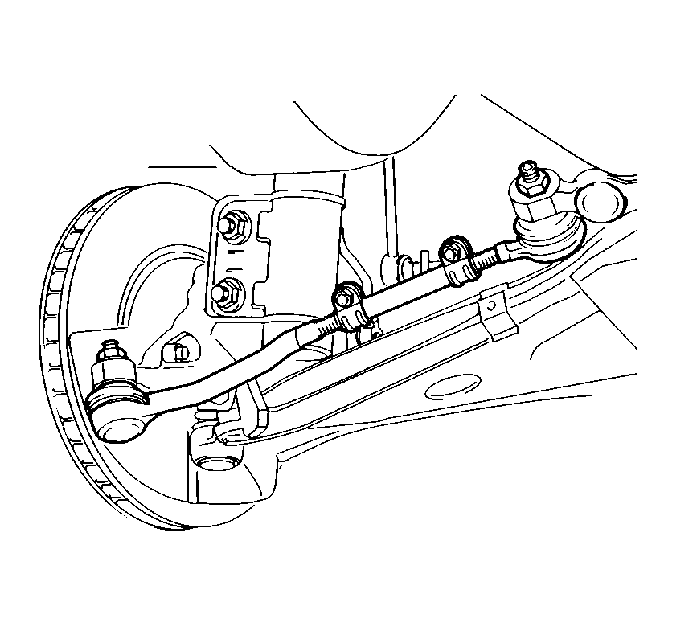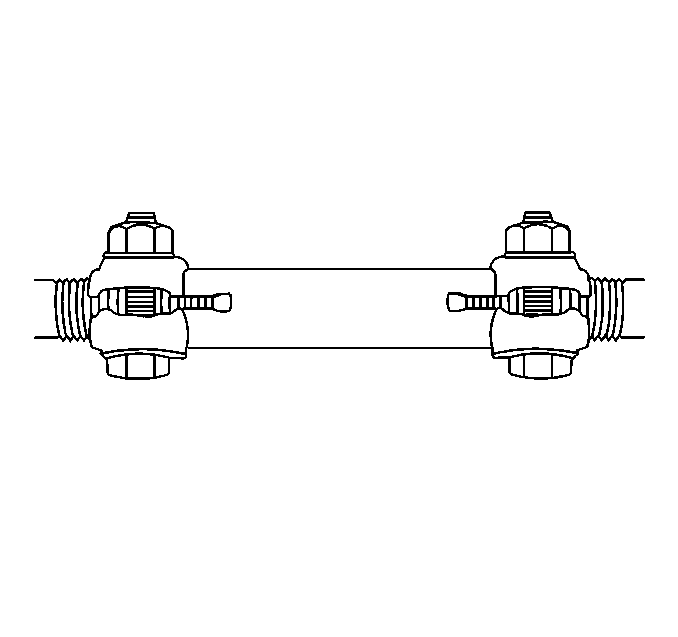The steps outlined in this procedure are the general requirements for properly setting the toe.
The alignment equipment varies in design and capabilities, therefore, consult with the equipment manufacturer's guidelines prior to setting this angle.
The toe adjustments are made by changing the length of the tie rods. A threaded adjusting sleeve is provided for this purpose.
The tie rod adjuster parts can become rusted in service. In such cases, it is recommended that if the torque required to remove the tie rod adjust clamp nut from the tie rod adjust clamp bolt after breakaway exceeds 9 N·m (80 lb in), discard the tie rod adjust clamp nuts and the tie rod adjust clamp bolts.
Apply penetrating oil between the tie rod adjust clamp and the tie rod adjuster. Rotate the tie rod adjust clamps until they move freely. Install the new tie rod adjust clamp bolts and the tie rod adjust clamp nuts having the same part number to ensure proper clamping at the specified torque.
Perform the following steps to make front toe adjustment:
- Make sure the steering wheel is set in a straight-ahead position.
- Make the toe adjustments separately at each tire and wheel.
- Loosen the tie rod adjust clamp bolts at each end of the tie rod adjuster.
- Rotate the inner and outer tire rod sockets to the limit of the control arm ball stud travel.
- With the steering wheel set in the straight-ahead position, turn the tie rod adjuster to obtain the proper toe adjustment.
- Position the tire rod adjuster clamps.
- Check to see that the number of threads showing on each end of the tie rod adjuster are equal and check that the outer tie rod ends are at right angles to the steering knuckle.


Notice: Use the correct fastener in the correct location. Replacement fasteners must be the correct part number for that application. Fasteners requiring replacement or fasteners requiring the use of thread locking compound or sealant are identified in the service procedure. Do not use paints, lubricants, or corrosion inhibitors on fasteners or fastener joint surfaces unless specified. These coatings affect fastener torque and joint clamping force and may damage the fastener. Use the correct tightening sequence and specifications when installing fasteners in order to avoid damage to parts and systems.
Tighten
Tighten the tie rod adjuster clamp bolts to 15 N·m (11 lb ft).
